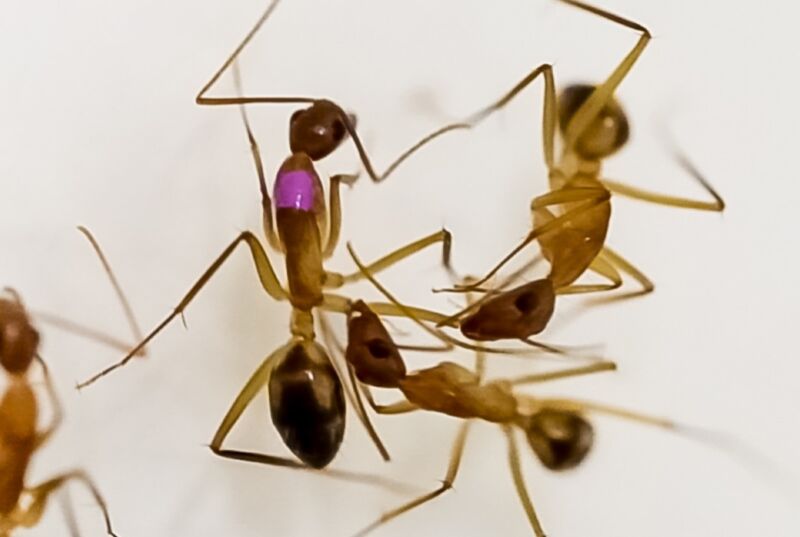Enlarge / Scientists have observed wound care and selective amputation in Florida carpenter ants. (credit: Danny Buffat/CC BY-SA)
Florida carpenter ants (Camponotus floridanus) selectively treat the wounded limbs of their fellow ants, according to a new paper published in the journal Current Biology. Depending on the location of the injury, the ants either lick the wounds to clean them or chew off the affected limb to keep infection from spreading. The treatment is surprisingly effective, with survival rates of around 90–95 percent for amputee ants.
“When we’re talking about amputation behavior, this is literally the only case in which a sophisticated and systematic amputation of an individual by another member of its species occurs in the animal kingdom,” said co-author Erik Frank, a behavioral ecologist at the University of Würzburg in Germany. “The fact that the ants are able to diagnose a wound, see if it’s infected or sterile, and treat it accordingly over long periods of time by other individuals—the only medical system that can rival that would be the human one.”
Frank has been studying various species of ants for many years. Late last year, he co-authored a paper detailing how Matabele ants (Megaponera analis) south of the Sahara can tell if an injured comrade’s wound is infected or not, thanks to chemical changes in the hydrocarbon profile of the ant cuticle when a wound gets infected. These ants only eat termites, but termites have powerful jaws and use them to defend against predators, so there is a high risk of injury to hunting ants.
Read 9 remaining paragraphs | Comments

